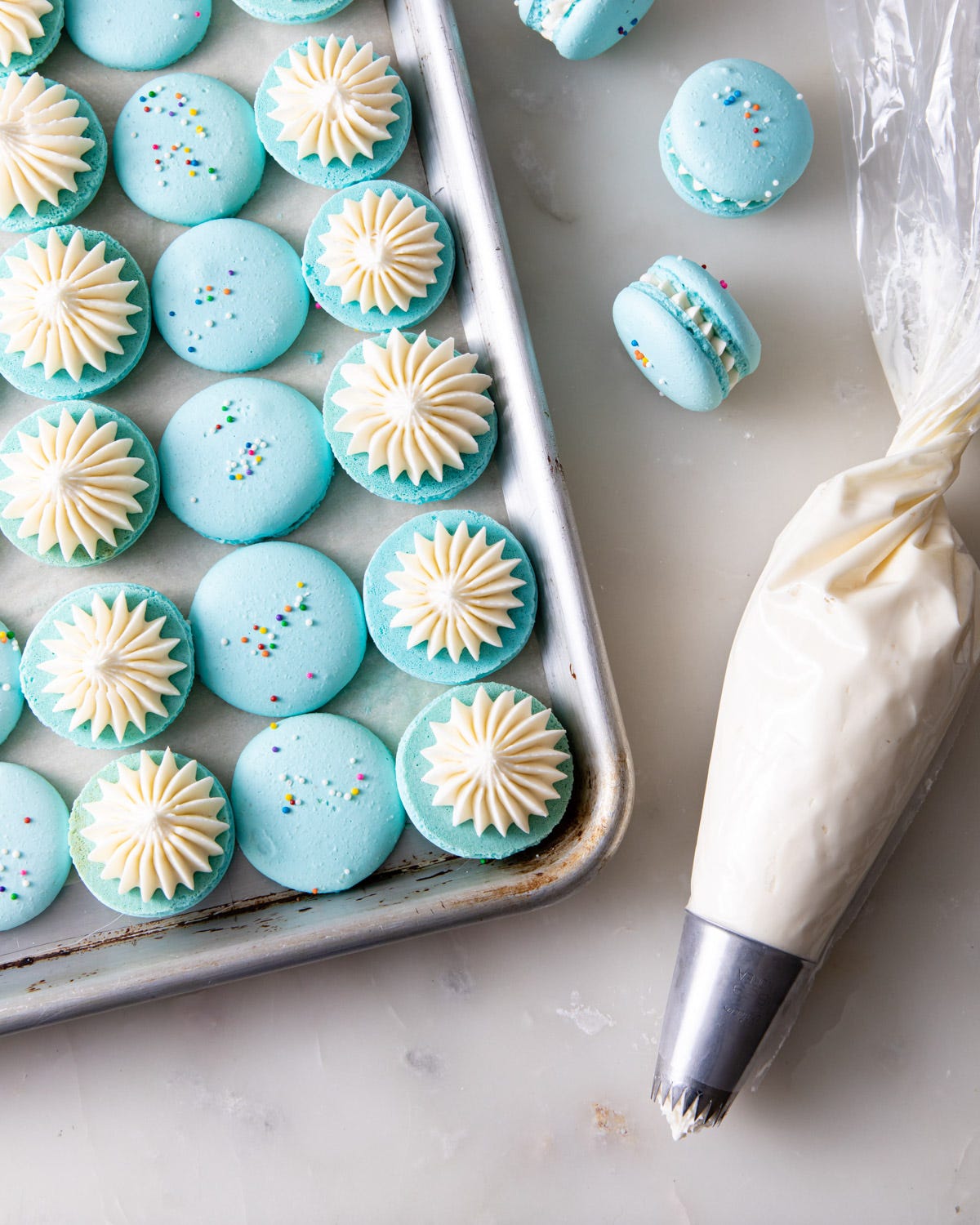Vanilla Macarons
Learn to make the perfect spring treat with tips, tricks, and a video tutorial!
Hi Bakers!
I spotted my first French macaron in a Paris train station at age 15. I didn’t really know what they were, but they sure were beautiful. Rows of rainbow-colored shells all lined up, ready to be plucked out and placed in a narrow pastry box. Another 15 years later, and I landed myself in the tiny kitchen of a patisserie churning out trays and trays of macarons for months.
These petite pastries are crisp on the outside, chewy in the middle, and come in an array of colors and fillings. Displayed in patisserie windows, arranged in neat rows or stacked into towers, their popularity has taken them from Paris to bakeries and even grocery stores around the world. And now to your own kitchen!
The allure of the macaron is real. They are cute, colorful, dainty, and delicious. Their texture is unlike anything else that you will ever experience. And if you’ve ever tried your hand at making them yourself, then you’ll appreciate the macaron for its pure perfection on an entirely different l…
Keep reading with a 7-day free trial
Subscribe to Tessa Huff's Bake Club to keep reading this post and get 7 days of free access to the full post archives.




